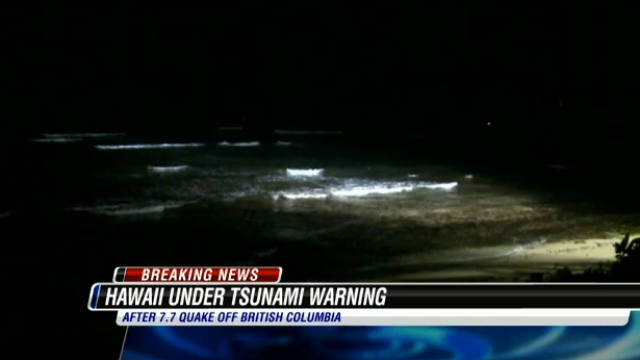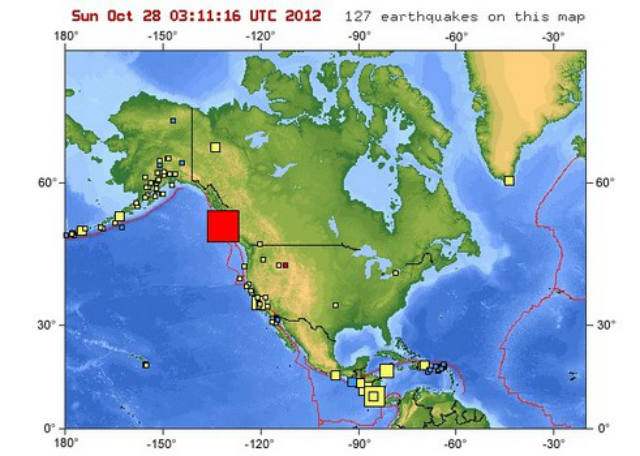
As if Hurricane Sandy’s Frankenstorm wrath isn’t bad enough on the East Coast, people on the West Coast are under a tsunami warning after a magnitude 7.7 earthquake hit off the coast of western Canada.
Hawaiians have been moving to higher ground. The islands weren’t originally included in the warning, but were later added. Waves started coming in about 10:30 p.m. Hawaii time, but were not large, observers reported. However, officials warned that tsunamis are not one wave, but several, and police are keeping onlookers back and beachfront residents have left the shore. Hawaii News Now, showing a live online feed, said the waves didn’t recede, as happens in large tsunamis, and while there were a few more waves, but they didn’t appear larger than usual.
The warning was downgraded to an advisory at about 7 a.m. today.

The U.S. Geological Survey in Colorado said the massive quake hit the Queen Charlotte Islands, sparking the immediate tsunami warning. It’s for the coastal areas of Hawaii, British Columbia, southern Alaska, Northern California, Oregon and Washington State. It also includes Craig and Sitka, Alaska. So far, there are no reports of any damages or tsunami waves coming ashore.
Hawaii was not originally in the warning zone, but was added about an hour or so after the first warnings came out. The first waves are expected to hit the islands at about 10:30 p.m. Hawaii time, or 4:30 a.m. Eastern Standard Time.
The earthquake was centered 96 miles south of Masset, British Columbia. The USGS said the 7.7 magnitude quake shook the area and was followed by a 5.8 magnitude aftershock several minutes later. The National Weather Service, in its warning, said people should not mess around with a tsunami warning:
All coastal residents in the warning area who are near the beach or in low-lying regions should move immediately inland to higher ground and away from all harbors and inlets including those sheltered directly from the sea. Those feeling the earth shake, seeing unusual wave action or the water level rising or receding may have only a few minutes before the tsunami arrival and should move immediately.
Lucy Jones, a USGS seismologist, told the Associated Press the earthquake likely would not generate a large tsunami.
This isn’t that big of an earthquake on tsunami scales. The really big tsunamis are usually up in the high 8s and 9s
Saturday night’s earthquake occurred along a “fairly long” fault on “a plate 200 kilometers long,” in a subduction zone, in which one plate slips underneath another, said Jones, noting that such quakes lift the sea floor and tend to cause tsunamis.
